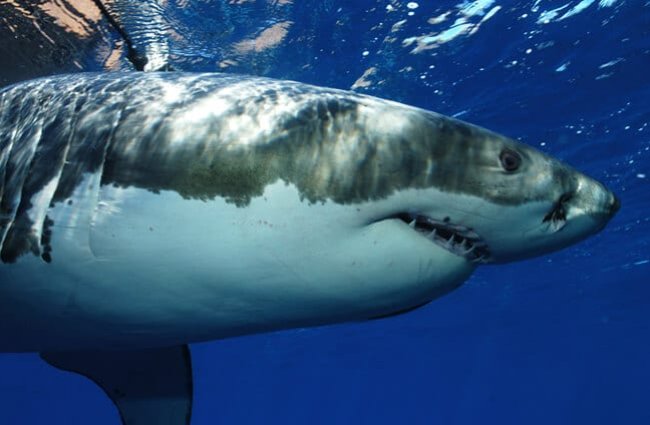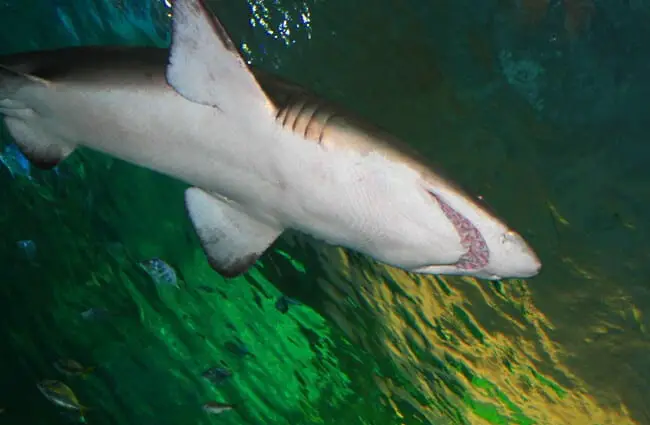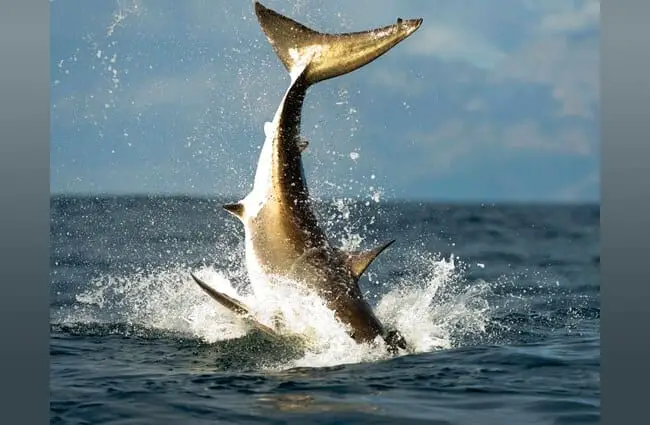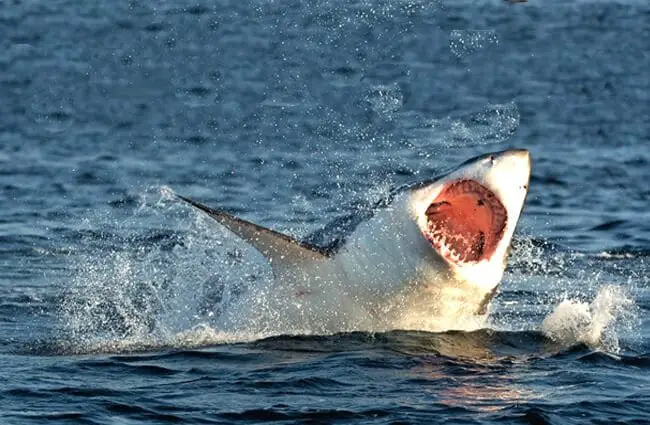The ocean’s depths hold many mysteries, but few creatures command as much awe and fascination as the Great White Shark. Known scientifically as Carcharodon carcharias, this magnificent apex predator has captivated human imagination for centuries, often misunderstood yet undeniably vital to marine ecosystems. Beyond the sensationalism, lies a complex and ancient creature, a marvel of evolution perfectly adapted to its oceanic realm.
This article delves into the true nature of the Great White Shark, exploring its biology, behavior, ecological role, and interactions with the world around it. Prepare to discover the facts behind the legend.

Understanding the Great White Shark: Basic Biology and Characteristics
The Great White Shark is a cartilaginous fish, belonging to the family Lamnidae, often referred to as mackerel sharks. These powerful swimmers are instantly recognizable by their torpedo-shaped bodies, pointed snouts, and crescent-shaped caudal fins. Their distinctive countershading, dark grey or brown on top and white underneath, provides excellent camouflage from both above and below, allowing them to blend seamlessly with the ocean floor or the sunlit surface.
Size and Lifespan
Great Whites are among the largest predatory fish on Earth. While average adults typically measure between 15 to 20 feet (4.6 to 6.1 meters) in length, some individuals have been recorded exceeding 20 feet and weighing over 4,000 pounds (1,800 kg). Females are generally larger than males. These impressive creatures are also long-lived, with recent studies suggesting a lifespan of up to 70 years or more, making them one of the longest-living cartilaginous fish.
Sensory Prowess
A Great White Shark’s hunting success is largely attributed to its extraordinary sensory capabilities. Beyond excellent eyesight, they possess a highly developed sense of smell, capable of detecting minute traces of blood in the water from great distances. Their lateral line system detects vibrations and pressure changes, alerting them to potential prey movements. Perhaps most remarkable are the Ampullae of Lorenzini, specialized electroreceptors that can detect the faint electrical fields generated by muscle contractions of other animals, even those hidden from view. This allows them to hunt effectively in murky waters or at night.

Dental Arsenal
The Great White’s mouth is a formidable weapon, housing multiple rows of serrated, triangular teeth. These teeth are constantly shed and replaced throughout the shark’s life, ensuring a perpetually sharp cutting edge. A single shark can go through thousands of teeth in its lifetime. The front rows are used for biting and tearing, while the back rows serve as replacements, rotating forward as needed. This dental conveyor belt is a testament to their predatory lifestyle.
Habitat, Distribution, and Migration
Great White Sharks are cosmopolitan, meaning they are found in almost all temperate and subtropical waters around the globe. Their preferred habitats include coastal and offshore waters, often near seal and sea lion colonies, which form a significant part of their diet. Key aggregation sites and known populations exist off the coasts of:
- North America (California, Mexico’s Guadalupe Island)
- South Africa (Gansbaai, False Bay)
- Australia (Neptune Islands, Port Lincoln)
- New Zealand
- Mediterranean Sea
- Japan
These sharks are highly migratory, undertaking vast journeys across ocean basins. They often travel between feeding grounds and breeding areas, sometimes covering thousands of miles. For instance, individuals tagged off California have been tracked migrating to Hawaii and back, demonstrating their incredible endurance and navigational abilities. These migrations are often linked to seasonal changes in prey availability and water temperature.

Diet and Hunting Strategies: The Ocean’s Apex Predator
As apex predators, Great White Sharks sit at the very top of the marine food web. Their diet shifts as they mature:
- Juveniles: Primarily feed on fish, smaller sharks, and rays.
- Adults: Transition to larger, calorie-rich prey, including:
Their hunting techniques are sophisticated and often involve ambush. They typically attack from below, using their countershading to remain unseen against the darker depths. A common strategy, particularly for pinniped prey, is the “breaching” attack, where the shark launches itself out of the water with incredible force, often stunning or incapacitating its target on the initial strike. After an initial bite, the shark may retreat, allowing the prey to bleed out before returning to feed. This strategy minimizes risk to the shark from a struggling, potentially dangerous animal.
Reproduction and Life Cycle
The Great White Shark’s reproductive process is one of the least understood aspects of its biology, largely due to the challenges of observing these elusive creatures in their natural environment. They are ovoviviparous, meaning the eggs hatch inside the mother’s uterus, and the pups continue to develop internally, feeding on unfertilized eggs (a process called oophagy) and other siblings (intrauterine cannibalism) for nourishment. This ensures that only the strongest pups are born, giving them a significant advantage for survival.
- Gestation Period: Estimated to be around 11 to 18 months.
- Litter Size: Typically ranges from 2 to 10 pups, though larger litters have been reported.
- Nursery Grounds: Pups are born in shallow, protected coastal areas, often referred to as nursery grounds, where food is abundant and larger predators are less common. These areas are crucial for the survival of young sharks.
- Maturity: Females reach sexual maturity much later than males, often around 12 to 18 years of age, while males mature between 9 to 10 years.
- Reproductive Cycle: Females are thought to reproduce only every two to three years, making their population growth very slow and contributing to their vulnerability.

Evolutionary History: A Living Fossil
The lineage of the Great White Shark stretches back millions of years. Its closest living relatives are the mako sharks, but its evolutionary path is often linked to the extinct giant shark, Carcharocles megalodon. While once thought to be a direct ancestor, current scientific consensus suggests that C. carcharias and C. megalodon evolved along separate, parallel lines from a common ancestor, with the Great White’s lineage tracing back to an ancient mako shark. The fossil record indicates that sharks similar to modern Great Whites have been patrolling the oceans for at least 16 million years, a testament to their successful design and adaptability.
Ecosystem Contribution and Interaction with Other Animals
As an apex predator, the Great White Shark plays a critical role in maintaining the health and balance of marine ecosystems. They are a keystone species, meaning their presence has a disproportionately large effect on their environment relative to their abundance. By preying on sick, weak, or old animals, they help to:
- Control populations of marine mammals and large fish.
- Prevent overgrazing of marine vegetation by their prey.
- Promote genetic fitness within prey populations by removing less fit individuals.
- Influence the behavior and distribution of other species, creating a cascade effect throughout the food web.
Their interactions with other animals are primarily predatory, but they also scavenge on large carcasses, contributing to nutrient cycling in the ocean. While they are dominant predators, they can sometimes face competition from orcas (killer whales), which are known to occasionally prey on Great Whites in certain regions.

Great White Sharks and Humans
Human Interaction and “Attacks”
Despite their fearsome reputation, interactions between Great White Sharks and humans are relatively rare. When incidents do occur, they are often referred to as “bites” rather than “attacks,” as research suggests many are exploratory or defensive rather than predatory. Sharks may “test bite” unfamiliar objects to determine if they are potential food. Humans, particularly surfers or swimmers, can sometimes be mistaken for seals or other natural prey, especially in murky water or low light conditions. The shark’s powerful bite can, unfortunately, be fatal even if the intention was not to consume. It is important to remember that humans are not part of a Great White Shark’s natural diet.
To minimize risk when in shark habitat:
- Avoid swimming at dawn, dusk, or night when sharks are most active.
- Do not swim alone.
- Avoid areas with known seal or sea lion colonies.
- Do not wear shiny jewelry, which can resemble fish scales.
- Avoid murky waters or areas with significant fishing activity.
- If a shark is sighted, remain calm, maintain eye contact, and slowly back away without splashing or sudden movements.
Conservation Status and Threats
The Great White Shark is listed as Vulnerable by the IUCN (International Union for Conservation of Nature). Their slow reproductive rate and long lifespan make them particularly susceptible to population declines. Major threats include:
- Overfishing: Both targeted fishing for their fins, jaws, and teeth, and accidental bycatch in commercial fisheries.
- Habitat Degradation: Pollution and coastal development impacting their nursery grounds and food sources.
- Prey Depletion: Declines in seal and sea lion populations can impact shark food availability.
Conservation efforts include international protections, fishing regulations, and the establishment of marine protected areas. Understanding and protecting these magnificent creatures is crucial for the health of our oceans.
Contribution to Human Culture
The Great White Shark holds a prominent, albeit often terrifying, place in human culture. From ancient myths to modern cinema, its image evokes both primal fear and profound respect. Steven Spielberg’s 1975 film Jaws cemented its status as the ultimate cinematic monster, shaping public perception for decades. However, in recent years, there has been a growing movement to re-educate the public, highlighting the shark’s ecological importance and dispelling myths. Documentaries, scientific research, and conservation campaigns are working to shift the narrative from fear to fascination and a desire for protection.
Interesting Facts and Expert Insights
- Warm-Blooded Hunters: Great Whites are one of the few fish species capable of maintaining a body temperature warmer than the surrounding water. This regional endothermy allows them to hunt in colder waters and gives them a metabolic advantage, increasing their speed and reaction time.
- Social Behavior: While often perceived as solitary, Great Whites exhibit complex social behaviors at aggregation sites, sometimes forming dominance hierarchies.
- Leaping Giants: The famous “breaching” behavior, where sharks launch themselves clear of the water, is most commonly observed in South Africa and is a spectacular display of their power.
- Rare in Captivity: Due to their immense size, migratory needs, and specialized diet, Great White Sharks are extremely difficult to keep in captivity. Most attempts have been short-lived, with individuals failing to thrive. The Monterey Bay Aquarium successfully housed a juvenile for a short period, providing invaluable research opportunities before its release.
Practical Guidance for Specific Audiences
For Students Researching Great White Sharks
When writing a research paper, focus on primary sources and scientific studies. Here are key areas to explore:
- Habitat: Investigate specific aggregation sites like Guadalupe Island or Gansbaai, and the environmental factors that draw sharks there.
- Evolution: Delve into the debate surrounding the Great White’s relationship with C. megalodon and the evidence from fossil records.
- Diet: Analyze stomach contents studies and observational data to understand dietary shifts with age and location.
- Mating and Reproduction: Research the challenges of studying ovoviviparity in Great Whites and the importance of nursery grounds.
- Ecosystem Contribution: Explore the concept of keystone species and how the removal of apex predators impacts marine food webs.
- Human Culture: Analyze the impact of media portrayals versus scientific understanding.
- Human Interaction: Differentiate between predatory and exploratory bites, and discuss preventative measures.
- Interesting Facts: Compile a list of unique physiological adaptations, such as regional endothermy and sensory organs.
For Animal Lovers Seeking Great White Sharks in the Wild
Observing Great White Sharks in their natural habitat is an unforgettable experience, but it must be done responsibly and ethically. The most common and safest way is through cage diving operations. Reputable operators can be found in:
- Guadalupe Island, Mexico: Known for crystal-clear waters and consistent shark sightings.
- Gansbaai, South Africa: Famous for its dense shark populations and breaching events.
- Port Lincoln, South Australia: Another prime location for cage diving.
Always choose operators with strong conservation ethics, who prioritize the sharks’ welfare and adhere to strict safety protocols. Avoid any operation that encourages feeding or harassment of the animals. Remember, these are wild animals, and sightings are never guaranteed, but the experience of being in their presence is profound.
For Aspiring Zoologists
To learn more about Great White Sharks, consider:
- Academic Study: Pursue degrees in marine biology, zoology, or oceanography.
- Research Opportunities: Seek internships or volunteer positions with shark research organizations. These often involve fieldwork, data collection, and conservation efforts.
- Scientific Literature: Read peer-reviewed articles on shark behavior, physiology, migration, and population dynamics.
- Conferences and Workshops: Attend events focused on elasmobranch research and conservation.
Understanding the challenges of studying these animals in the wild will be key to contributing to future knowledge.
For Someone Encountering a Great White Shark in the Wild (Ocean Activities)
While rare, an encounter with a Great White Shark while swimming, surfing, or diving can be startling. The most critical advice is to remain calm and avoid sudden, erratic movements. Panicking can mimic the distress of injured prey, potentially attracting the shark’s attention. If possible:
- Maintain Eye Contact: Sharks are ambush predators, and direct eye contact can signal that you are aware of their presence and not an easy target.
- Slowly Back Away: Do not turn your back and swim frantically. Instead, slowly and smoothly move towards a boat, shore, or reef.
- Make Yourself Large: If the shark approaches closely, try to make yourself appear as large as possible.
- Defend Yourself (Last Resort): If an attack is imminent or occurring, aim for sensitive areas like the eyes or gills.
Prevention is always the best strategy, so adhere to local warnings and safety guidelines.
For a Zookeeper Caring for a Great White Shark in Captivity
The reality is that Great White Sharks are not suitable for long-term captivity. Their immense size, highly migratory nature, specialized diet, and complex social and sensory needs make it virtually impossible to replicate their natural environment in an aquarium setting. Historically, attempts to keep Great Whites have resulted in the sharks quickly deteriorating in health, refusing to eat, or exhibiting stress-induced behaviors, often leading to their premature death or forced release.
Therefore, the primary task for a zookeeper in this hypothetical scenario would be to avoid keeping Great White Sharks in captivity altogether. Instead, efforts should focus on:
- Education: Educating the public about why these animals belong in the wild.
- Conservation: Supporting in-situ (in the wild) conservation efforts and research.
- Rehabilitation (Extremely Rare): In the unlikely event of a severely injured juvenile needing temporary care, the focus would be on rapid rehabilitation and release, requiring highly specialized facilities and expertise. This would involve:
- Maintaining pristine water quality and appropriate temperature.
- Providing a vast, circular tank to prevent disorientation.
- Offering a diverse and natural diet.
- Minimizing human interaction and stress.
- Monitoring health closely with advanced veterinary care.
The consensus among marine biologists and conservationists is that Great White Sharks thrive only in the vastness of the open ocean.
Conclusion
The Great White Shark is far more than the monstrous image often portrayed. It is a highly evolved, ecologically essential predator, a testament to millions of years of natural selection. From its ancient lineage to its sophisticated hunting techniques and vital role in maintaining ocean health, Carcharodon carcharias deserves our respect, understanding, and most importantly, our protection. By shifting our perspective from fear to fascination, we can ensure that this magnificent creature continues to grace our oceans for generations to come, a true symbol of the wild and untamed marine world.

![Red Angus Closeup of a beautiful Red Angus cowPhoto by: U.S. Department of Agriculture [pubic domain]https://creativecommons.org/licenses/by/2.0/](https://animals.net/wp-content/uploads/2020/03/Red-Angus-4-238x178.jpg)




![Red Angus Closeup of a beautiful Red Angus cowPhoto by: U.S. Department of Agriculture [pubic domain]https://creativecommons.org/licenses/by/2.0/](https://animals.net/wp-content/uploads/2020/03/Red-Angus-4-100x75.jpg)

